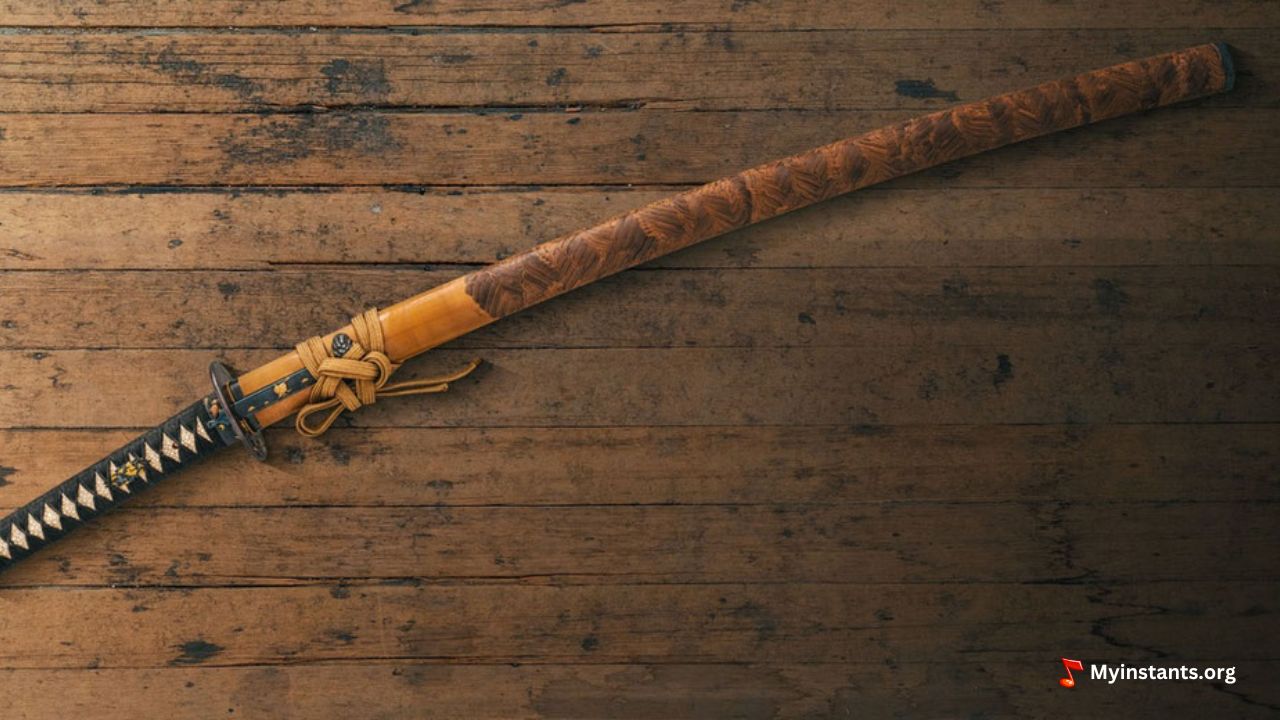The Japanese sword has a long and rich history. It has evolved to meet new standards and needs of the specific era.
The shape, features, and technology of the Japanese sword that is known to be used today were perfected in medieval Japan. Even after that time, until the end of the feudal period 1868, the Japanese sword continued to evolve. However, it was always based on designs from medieval times.
The Japanese sword from www.truekatana.com is a fascinating weapon. From its beginnings in ancient Japan to its importance in modern culture, the story of the Japanese sword is one of culture and tradition. Let us now explore the history of Japanese swords and how they are connected with the culture.
Definition Of The Japanese Sword
The Japanese sword, also known as “nihonto,” is a unique weapon with a rich history. It boasts various blade types, including the famous katana, tanto, and wakizashi.
The Japanese sword is known for its incredible sharpness and craftsmanship. These swords symbolize Japanese martial skills and cultural heritage.
Importance Of The Japanese Sword
The Japanese sword is essential for many reasons. It symbolizes the skill and artistry of Japanese artisans specializing in these swords. Apart from its use in combat, the Japanese sword is perceived as the soul of Japan. It reflects the country’s values, history, and sense of beauty.
Even though these swords were created in medieval times, they still hold their importance. In modern-day Japan, they are admired for their beauty and craftsmanship and continue to be a part of the country’s cultural heritage.
Also see: RAADS-R Test For Autism – How To Take It Online For Free?
Rich History Of The Japanese Sword
The Japanese sword has a long history dating back to ancient Japan, when it became a vital tool for samurai warriors.
At first, these swords looked like swords from Korea or China. However, Japanese sword makers improved the design, making them sharper and more robust. This eventually created the iconic katana during the Heian period (794-1185).
The katana became famous for its curved blade and sharpness. It wasn’t just a weapon but also a symbol of honor for samurai warriors. The making of a katana was a careful process that involved skilled artisans.
Ancient Origins
In Heian, swords were mainly straight and had dual sharp edges. They looked similar to swords from Korea and China. However, as fighting methods changed, Japanese sword makers started to make curved swords. This happened in the late Heian and Kamakura periods (794-1333). The “katana,” a curved blade, was created during this time. It became trendy and a symbol of honor for samurai warriors.
Rise Of The Samurai
The rise of the samurai during medieval Japan marked a significant period for the Japanese sword. These skilled warriors transformed the sword from a mere combat tool to a symbol of prestige and respect.
For samurai warriors, their swords were the most critical asset. The katana, famous for its exceptional cutting prowess, also has a deep spiritual significance.
Also see: Z-Library And PDF Drive – Making Knowledge Available To Everyone
Evolution Of Swordsmithing Techniques
The way Japanese swords are made has changed with time. In this section, we will look at how swordsmiths have refined their techniques over time.
- Traditional Sword-Making
Making a Japanese sword, called “tameshigiri,” is nothing short of a tradition-filled ceremony. Each sword carries the spirit of its maker, and it all starts with choosing the best steel. The material is then heated, hammered, and folded repeatedly to eliminate flaws and make a robust and flexible blade.
- Mastering Materials
A special kind of high-carbon steel called “tamahagane” is used in Japanese swords. Swordsmiths carefully melt and shape this steel, tweaking its mix to get the right balance of toughness and flexibility for the final blade.
- Shaping the Blade
Shaping the blade of a sword takes a lot of work. It requires hammering and shaping to get the curve, or “sori,” right. This process also creates a unique pattern along the blade’s edge, known as the “Hamon.”
- Polishing and Final Touches
After the blade is forged, it goes through a series of polishing steps. This helps enhance the beauty and sharpness of the blades. Skilled polishers, called “togishi,” use traditional methods and stones to give the blade a smooth, shiny finish, highlighting its hamon.
- Decorative Details
Japanese swords aren’t just about the blade; they also come with fancy fittings and decorations called “kosher.” These include things like the handguard (tsuba), hilt (tsuka), and scabbard (saya). Each part is made with care to match the sword’s overall look.
Also see: Yellowstone Season 5 Part 2 Release Date, Cast & More
Legacy And Cultural Significance
The Japanese sword is more than just a weapon. It symbolizes values like honor, bravery, and tradition. At the heart of the samurai’s way of life is “bushido,” which emphasizes loyalty, discipline, and moral integrity.
Art And Aesthetics
Japanese swords aren’t just functional; they are also aesthetically pleasing. They are adorned with intricate designs and symbols that reflect the skills and craftsmanship of their maker.
Cultural Symbol
Throughout history, the Japanese sword has been immortalized in literature, art, and folklore as a symbol of heroism and national pride. From ancient legends to modern cinematic masterpieces, its legacy continues to impress people worldwide.
Contemporary Revival
Even though samurai aren’t around anymore, people are still interested in learning how to use swords like they did. Some even practice old sword-fighting styles like “kendo” and “iaido” to keep the tradition alive.
Revival Of Swordsmanship
Despite modern advancements, traditional sword-making remains a vital art form in Japan. Master swordsmiths use centuries-old techniques to produce blades of unparalleled quality and beauty. This is to ensure that the legacy lives on.
Preserving Heritage
Significant efforts are made to safeguard the cultural heritage of Japanese sword-making. From museums to cultural institutions, they all showcase these works of art to ensure that future generations appreciate and understand their significance.
Also see: Who Makes Genesis Cars? Is It Owned By Hyundai?
Final Words
The history of the Japanese sword shows how it changed over time. It started as an essential tool for survival and became a symbol of honor in Japan. From ancient battles to modern peace, the Japanese sword has been critical in different eras.
Also see: Myinstants – Meme SoundBoard & Sound Buttons
FAQs
What is a Japanese sword called?
A Japanese sword is called a katana.
Why are swords essential in Japan?
For over a thousand years, people have been amazed by the samurai sword. It’s said to hold a warrior’s spirit, making these swords a big deal in Japan.
What is the use of the katana’s tsuba?
The tsuba on a katana protects the wielder’s hand during combat and helps balance the sword.
What does the Japanese sword symbolize?
The Japanese sword symbolized the Samurai’s status, and they usually carried two types: the long katana and the short wakizashi.
Why are Japanese swords so strong?
Japanese sword makers use high-carbon steel to make their swords strong.
For more such interesting content, keep reading Myinstants Blog.



